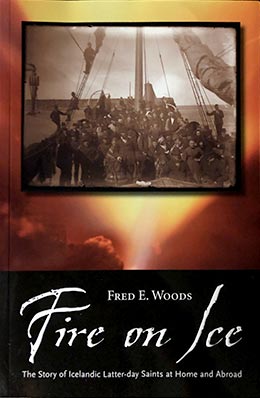Preface
Fred Woods, “Preface,” in Fire on Ice: The Story of Icelandic Latter-day Saints at Home and Abroad, (Provo, UT: Religious Studies Center, Brigham Young University, 2005), xiii–xiv.
How did the message of Mormonism come to Iceland? Who were the earliest Latter-day Saint missionaries that brought the news of a restored gospel, and what obstacles did they encounter in the land of fire and ice? Who were the first Icelanders willing to leave their beloved homeland and immigrate to the United States of America? Many people are surprised to learn these adventurers, eager to gather to Utah, were converts to The Church of Jesus Christ of Latter-day Saints, commonly known as Latter-day Saints or Mormons.
It was no small feat that these brave Icelandic immigrants made the arduous journey to Utah by sail, rail, and trail and assimilated into the western American Mormon culture during the nineteenth century. These transplanted Icelanders have and continue to stamp a significant cultural imprint upon Utahns.
This book chronicles the Latter-day Saint history in Iceland and Utah and specifically examines the interrelationships between Icelandic converts and connections in their native homeland with those who immigrated to Spanish Fork, Utah. This singular history, largely neglected up until now,[1] is unveiled in this landmark study during this 2005 dual sesquicentennial commemoration of both the arrival of the first Icelandic Latter-day Saints in Utah as well as the earliest settlement of Icelanders anywhere in the United States.
Notes
[1] Several articles have been written in Icelandic addressing the Mormon Icelanders, but most are based on secondary literature and are quite often redundant. La Nora Allred’s The Icelanders of Utah is the only book published in English on this topic. In 1998 she graciously relinquished her publication rights of this book to the Icelandic Association of Utah. Although the historical component of her compilation often lacks documentation, Allred gathered important genealogical data, which have been most useful.
